Fassadenbegrünung
Green facades
Aiming high for a good work atmosphere
Alongside vegetation and green roofs, green facades add a third dimension, vertical greenery. They have the power to visually and ecologically enliven the otherwise dead facade. The greening favors a balanced microclimate. Marco Schmidt, who conducts research at the Institute of Physics at the Humboldt-Universität in Berlin-Adlershof, describes the large green glass facade of a building: “In winter, the climbing plants are bare, allowing sunlight to pass through the glass surfaces and provide additional heating. In summer, the green facade protects against the sun's rays.” Unlike standard roller shades, which can heat up to over 50 degrees Celsius in summer, the climbing plants remain cool, protect themselves and thus the building from heat evaporation. They are able to cool the surroundings at the same time. With the help of hundreds of sensors, Schmidt confirmed the effect of the plants. The cooling capacity of the plants is found to be 280 kilowatt hours per facade in the summer, which matches the energy consumption of a large air conditioning system. The greening of the facade is irrigated with rainwater from its own cistern.

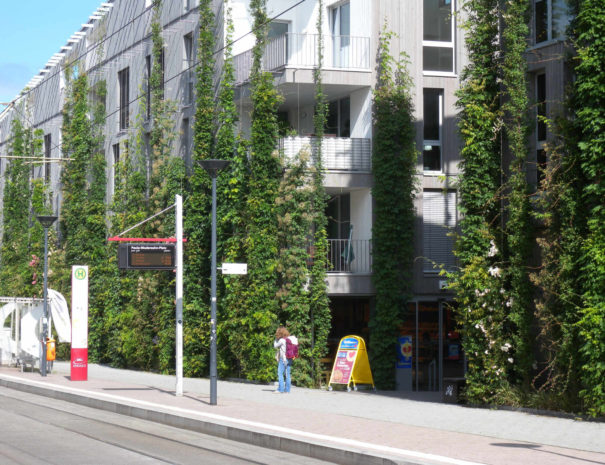
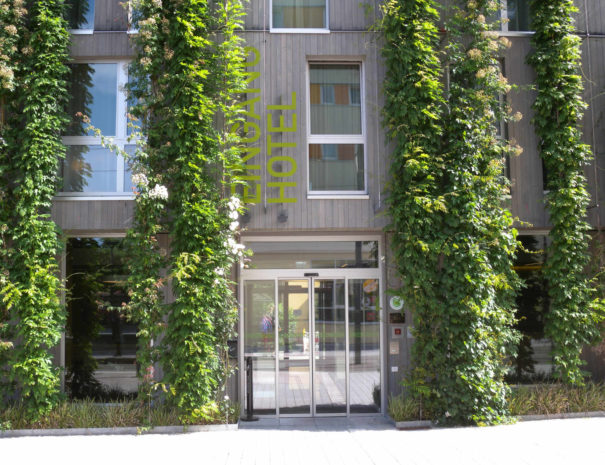
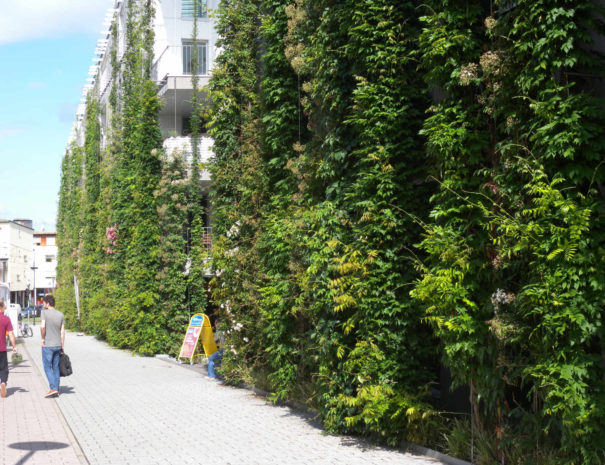
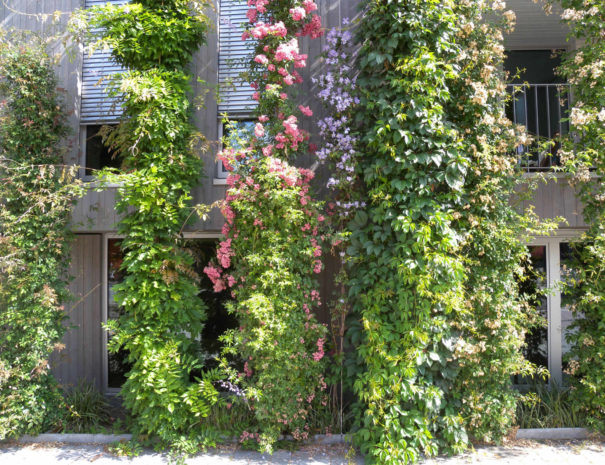
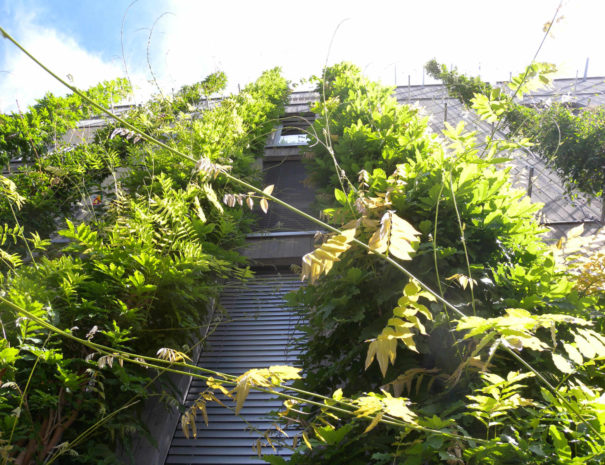
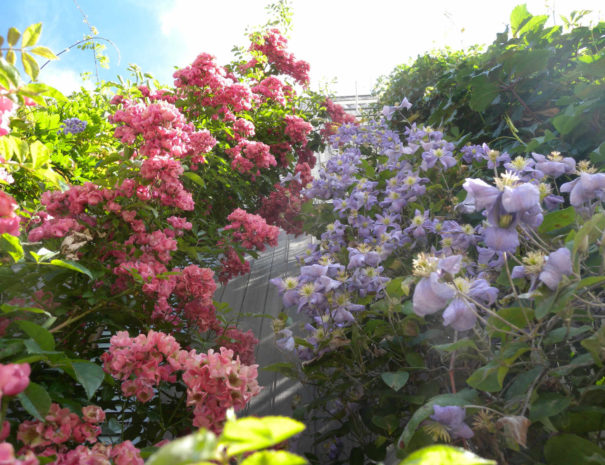
Requirements and Construction
Greening a facade requires sufficient space for roots, a reliable water supply and suitable and stable long-term trellis construction. Ropes, grids, rods and nets made of (stainless) steel are suitable for this. Since the tendrils wrap around the construction and can form woody shoots as thick as an arm, a distance of approx. 50 cm from the facade is recommended for sufficient space. For certain species like the Wisteria, construction needs to be very stable, as when the plant ages, it develops astonishing strength. A facade with Wisteria or Clematis is impressive, like a trademark.
The climbing artist
A distinction can be made between self-climbers such as ivy and types of wild wine, loop climbers like the Wisteria and extending climbers like the climbing Hydrangea. Self-climbers do not need a climbing frame, but can damage the facade in the long run
Important tendrils
Native species include ivy, honeysuckle (Lonicera periclymenum), common forest vine (Clematis vitalba) and wild Humulis. These species are only slightly suitability for commercial buildings since they thrive in a semi-shaded forest climate. These non-native species are suitable for their robustness: Fallopia baldschuanica, Wisteria, Clematis (pink, white), Vitis vinifera (beautiful autumn colors), climbing Hydrangea, Campsis, Jasminum nudiflorum.
Habitat
Green facades provide an appealing habitat for birds to nest and liven the areas surrounding the building. Their nesting sites can also be found in dense commercial areas. (Text taken from brochure „Moderne Unternehmen im Einklang mit der Natur“, published by LUBW Landesanstalt für Umwelt, Messungen und Naturschutz Baden-Württemberg, Karlsruhe 2013)
Space-saving urban greenery
In central locations, land prices for commercial space are exorbitantly expensive. An increase in urban greenery can improve the quality of living and workspace. Since there is hardly any groundwork available for greenery, an alternative is to grow vertically.
Vegetation wall
Green walls similar to those of the landscape artist Patrick Blanc are currently in trend. These are not conventional ground-based systems, but self-sufficient systems. They are pre-built, statically analysed facades with earthy substrate filling and artificial irrigation. This type of construction requires highly effective planning and, in order to remain appealing, intensive maintenance. Due to the high costs, it is only suitable for special buildings in urban locations. This specific type of greenery is suitable because it attracts attention and is particularly appealing to look at. www.fassadenbegruenung.de
Source of information
Modern companies in accordance with Natur Leitfaden für ein naturnahes Betriebsgelände Hrsg: LUBW Landesanstalt für Umwelt, Messungen und Naturschutz Baden-Württemberg, Karlsruhe 2013
